 In today’s busy world, many Americans find themselves cooking meals for one. Older adults and college students alike face the challenge of making meal preparation a priority when no one else is depending on them to create a balanced meal. Whether you pop a dish into the microwave after a busy day or spend time cooking a special meal for yourself, shopping for and preparing healthy, low-cost meals for one can be easy and enjoyable with just a little bit of planning. This 4-page fact sheet was written by Morgan Denhard and Wendy Dahl, and published by the UF Department of Food Science and Human Nutrition, February 2013.
In today’s busy world, many Americans find themselves cooking meals for one. Older adults and college students alike face the challenge of making meal preparation a priority when no one else is depending on them to create a balanced meal. Whether you pop a dish into the microwave after a busy day or spend time cooking a special meal for yourself, shopping for and preparing healthy, low-cost meals for one can be easy and enjoyable with just a little bit of planning. This 4-page fact sheet was written by Morgan Denhard and Wendy Dahl, and published by the UF Department of Food Science and Human Nutrition, February 2013.
http://edis.ifas.ufl.edu/fs224
Category: Families & Consumers
Family Records (FCS7103/HE988)
 This publication should be kept in a safe place known to adult members of your family and/or trusted friend(s). An additional copy should be kept in a safe deposit box. Revise it annually or after any life-changing circumstance to keep vital information current. This can make looking for vital records much faster and easier. It can also be used as a starting place for estate planning. These checklists provide suggestions on where to keep your important papers and what information to keep. This 14-page fact sheet was written by Brenda C. Williams, Brittany Seamon, and Martie Gillen, and published by the UF Department of Family Youth and Community Sciences, April 2013.
This publication should be kept in a safe place known to adult members of your family and/or trusted friend(s). An additional copy should be kept in a safe deposit box. Revise it annually or after any life-changing circumstance to keep vital information current. This can make looking for vital records much faster and easier. It can also be used as a starting place for estate planning. These checklists provide suggestions on where to keep your important papers and what information to keep. This 14-page fact sheet was written by Brenda C. Williams, Brittany Seamon, and Martie Gillen, and published by the UF Department of Family Youth and Community Sciences, April 2013.
http://edis.ifas.ufl.edu/he988
Understanding Gluten Sensitivity and Celiac Disease (FCS8028/FY1369)
 Several years ago, most people probably had never heard of gluten, but by 2011, gluten-free diets became more popular than low carbohydrate diets. One reason for this is the increased awareness and diagnosis of conditions in which gluten triggers an abnormal response in the body, such as gluten sensitivity and celiac disease. This 4-page fact sheet will help you learn about gluten sensitivity and celiac disease, as well as understand what they have in common and what is different about them. Written by Stephanie Meyer, Karla P. Shelnutt, and Gail P. A. Kauwell, and published by the UF Department of Family Youth and Community Sciences, April 2013.
Several years ago, most people probably had never heard of gluten, but by 2011, gluten-free diets became more popular than low carbohydrate diets. One reason for this is the increased awareness and diagnosis of conditions in which gluten triggers an abnormal response in the body, such as gluten sensitivity and celiac disease. This 4-page fact sheet will help you learn about gluten sensitivity and celiac disease, as well as understand what they have in common and what is different about them. Written by Stephanie Meyer, Karla P. Shelnutt, and Gail P. A. Kauwell, and published by the UF Department of Family Youth and Community Sciences, April 2013.
http://edis.ifas.ufl.edu/fy1369
Kinship Caregivers: Understanding Children and the Military Deployment Cycle (FCS2330/FY1368)
 Deployment occurs in almost every branch of the military, and the experience differs for each family and each family member. To reflect the diversity of experiences, military professionals have proposed various models of the deployment cycle to assist families in the transition. There are at least five phases that are common across models: pre-deployment, deployment, sustainment, preparation (also known as redeployment), and reunification (or home-coming). Recognizing that each family is unique, this deployment cycle is intended not as a rule-book but as a helpful guide to families as they experience deployment of a parent. This 4-page fact sheet was written by Elizabeth Thomas and Larry F. Forthun, and published by the UF Department of Family Youth and Community Sciences, March 2013.
Deployment occurs in almost every branch of the military, and the experience differs for each family and each family member. To reflect the diversity of experiences, military professionals have proposed various models of the deployment cycle to assist families in the transition. There are at least five phases that are common across models: pre-deployment, deployment, sustainment, preparation (also known as redeployment), and reunification (or home-coming). Recognizing that each family is unique, this deployment cycle is intended not as a rule-book but as a helpful guide to families as they experience deployment of a parent. This 4-page fact sheet was written by Elizabeth Thomas and Larry F. Forthun, and published by the UF Department of Family Youth and Community Sciences, March 2013.
http://edis.ifas.ufl.edu/fy1368
Choose MyPlate: Reduce Your Sodium (FCS80027/FY1360)
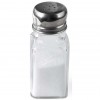 Reducing sodium intake is one of the MyPlate recommendations for healthy eating. Most Americans eat more sodium than they need, which can have negative health effects. This publication provides facts about sodium and why reducing sodium intake is important. It also provides easy tips to reduce your sodium intake. This 4-page fact sheet was written by Ashley Hamm, Karla P. Shelnutt, and Gail P. A. Kauwell, and published by the UF Department of Family Youth and Community Sciences, April 2013.
Reducing sodium intake is one of the MyPlate recommendations for healthy eating. Most Americans eat more sodium than they need, which can have negative health effects. This publication provides facts about sodium and why reducing sodium intake is important. It also provides easy tips to reduce your sodium intake. This 4-page fact sheet was written by Ashley Hamm, Karla P. Shelnutt, and Gail P. A. Kauwell, and published by the UF Department of Family Youth and Community Sciences, April 2013.
http://edis.ifas.ufl.edu/fy1360
Bottle-Feeding Your Baby (FCS80026/FY1359)
 Families choose to bottle-feed their babies for many reasons. While bottle-feeding is not difficult, you need to know several things to feed your baby safely and ensure that he or she receives the nutrition and bonding needed for proper growth and development. If you are considering bottle-feeding your baby or have decided that bottle-feeding is the best option for your situation, this publication will help you learn about bottle-feeding. This 5-page fact sheet was written by Sarah A. Schmidt, Karla P. Shelnutt, and Gail P. A. Kauwell, and published by the UF Department of Family Youth and Community Sciences, April 2013.
Families choose to bottle-feed their babies for many reasons. While bottle-feeding is not difficult, you need to know several things to feed your baby safely and ensure that he or she receives the nutrition and bonding needed for proper growth and development. If you are considering bottle-feeding your baby or have decided that bottle-feeding is the best option for your situation, this publication will help you learn about bottle-feeding. This 5-page fact sheet was written by Sarah A. Schmidt, Karla P. Shelnutt, and Gail P. A. Kauwell, and published by the UF Department of Family Youth and Community Sciences, April 2013.
http://edis.ifas.ufl.edu/fy1359
Choose MyPlate: Drink Water Instead of Sugary Drinks (FCS80025/FY1358)
 The regular consumption of sugary drinks has greatly increased over the past few decades. Most adults consume about 400 calories per day as beverages, and regular soda is the number one drink. The added sugars and calories in sugary drinks can really add up — so rethink what you drink! Use one or more of the tips provided to drink more water and get on the right track to living a healthier life. This 3-page fact sheet was written by Jeanine Beatty, Karla Shelnutt, and Gail Kauwell, and published by the UF Department of Family Youth and Community Sciences, April 2013.
The regular consumption of sugary drinks has greatly increased over the past few decades. Most adults consume about 400 calories per day as beverages, and regular soda is the number one drink. The added sugars and calories in sugary drinks can really add up — so rethink what you drink! Use one or more of the tips provided to drink more water and get on the right track to living a healthier life. This 3-page fact sheet was written by Jeanine Beatty, Karla Shelnutt, and Gail Kauwell, and published by the UF Department of Family Youth and Community Sciences, April 2013.
http://edis.ifas.ufl.edu/fy1358
Kinship Caregivers: Communicating with Children about a Parent’s Deployment (FCS2329/FY1367)
 The deployment of a military parent is undoubtedly a difficult time for children. This is especially true if the military child is being cared for by a relative, or kinship parent such as a grandparent, aunt, uncle, or older sibling. The child may have to experience a kind of personal deployment from their own home. To help children cope with these changes, it is important for the kinship parent to effectively communicate with the child about the deployment and the deployed parent. This will safeguard against emotional and behavioral problems and can lead to improvements in the child’s overall sense of well-being. This 3-page fact sheet was written by Elizabeth Thomas and Larry F. Forthun, and published by the UF Department of Family Youth and Community Sciences, March 2013.
The deployment of a military parent is undoubtedly a difficult time for children. This is especially true if the military child is being cared for by a relative, or kinship parent such as a grandparent, aunt, uncle, or older sibling. The child may have to experience a kind of personal deployment from their own home. To help children cope with these changes, it is important for the kinship parent to effectively communicate with the child about the deployment and the deployed parent. This will safeguard against emotional and behavioral problems and can lead to improvements in the child’s overall sense of well-being. This 3-page fact sheet was written by Elizabeth Thomas and Larry F. Forthun, and published by the UF Department of Family Youth and Community Sciences, March 2013.
http://edis.ifas.ufl.edu/fy1367
My Child Has a Mental Illness: Developing Parental Advocacy Skills (FCS2327/FY1365)
 If your child is diagnosed with a mental illness, you will face major changes in your life. Being proactive about your child’s care and advocating for him or her will help you and your child handle the illness successfully. This 5-page fact sheet was written by Tracy DeCubellis, Victor W. Harris, and Martie Gillen, and published by the UF Department of Family Youth and Community Sciences, April 2013.
If your child is diagnosed with a mental illness, you will face major changes in your life. Being proactive about your child’s care and advocating for him or her will help you and your child handle the illness successfully. This 5-page fact sheet was written by Tracy DeCubellis, Victor W. Harris, and Martie Gillen, and published by the UF Department of Family Youth and Community Sciences, April 2013.
http://edis.ifas.ufl.edu/fy1365
Family Reunification Following Foster Care (FCS2328/FY1366)
 Families reuniting after an intervention that requires foster care for the children face unique challenges. Parents in these situations may need to learn about their parental roles, the basic needs for the healthy development of their children, and resources that will help the family in their reunification. Researchers and practitioners in child welfare have provided helpful information to develop workable plans to aid families in reunifying and rebuilding. This 5-page fact sheet is a brief summary of the overarching themes provided by the literature. Written by Rosalyn Monroe and Victor W. Harris, and published by the UF Department of Family Youth and Community Sciences, April 2013.
Families reuniting after an intervention that requires foster care for the children face unique challenges. Parents in these situations may need to learn about their parental roles, the basic needs for the healthy development of their children, and resources that will help the family in their reunification. Researchers and practitioners in child welfare have provided helpful information to develop workable plans to aid families in reunifying and rebuilding. This 5-page fact sheet is a brief summary of the overarching themes provided by the literature. Written by Rosalyn Monroe and Victor W. Harris, and published by the UF Department of Family Youth and Community Sciences, April 2013.
http://edis.ifas.ufl.edu/fy1366
Guia de merendar saludablemente para el adulto mayor fragil (FSHN1219S/FS222)
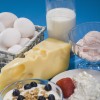 El tomar decisiones inteligentes para la selección de las meriendas ayuda a asegurar que los adultos mayores frágiles satisfagan sus necesidades nutricionales. Estas son algunas meriendas sencillas y nutritivas que son apropiadas para los adultos mayores frágiles. This 3-page fact sheet was written by Paula G. Harris-Swiatko y Wendy J. Dahl, and published by the UF Department of Food Science and Human Nutrition, April 2013.
El tomar decisiones inteligentes para la selección de las meriendas ayuda a asegurar que los adultos mayores frágiles satisfagan sus necesidades nutricionales. Estas son algunas meriendas sencillas y nutritivas que son apropiadas para los adultos mayores frágiles. This 3-page fact sheet was written by Paula G. Harris-Swiatko y Wendy J. Dahl, and published by the UF Department of Food Science and Human Nutrition, April 2013.
http://edis.ifas.ufl.edu/fs222
Preventing Foodborne Illness: Salmonellosis (FSHN0214/FS096)
 In 2007, there were over 1 million cases and some 400 deaths associated with Salmonella-contaminated food. In 2004, it was estimated that the total economic burden caused by Salmonella infection in the United States was $1.6–$5.3 billion. Food handlers, processors, and retailers can minimize the risk of salmonellosis by using good food handling practices. This 6-page fact sheet was written by Keith R. Schneider, Renée Goodrich Schneider, Michael A. Hubbard, and Susanna Richardson, and published by the UF Department of Food Science and Human Nutrition, March 2013.
In 2007, there were over 1 million cases and some 400 deaths associated with Salmonella-contaminated food. In 2004, it was estimated that the total economic burden caused by Salmonella infection in the United States was $1.6–$5.3 billion. Food handlers, processors, and retailers can minimize the risk of salmonellosis by using good food handling practices. This 6-page fact sheet was written by Keith R. Schneider, Renée Goodrich Schneider, Michael A. Hubbard, and Susanna Richardson, and published by the UF Department of Food Science and Human Nutrition, March 2013.
http://edis.ifas.ufl.edu/fs096
Preventing Foodborne Illness: Listeriosis (FSHN036/FS102)
 Listeriosis is one of several foodborne diseases that are often reported in the scientific and popular press. In the United States, it affects about 1,600 people every year, with about 270 of those cases resulting in death. It expresses itself in the affected person by means of septicemia, meningitis, and/or encephalitis. Pregnant women who have intrauterine or cervical infections caused by L. monocytogenes in their second or third trimesters may spontaneously abort the fetus or produce a stillbirth. Influenza-type symptoms, which may include continuous fever, usually precede the aforementioned disorders. This 4-page fact sheet was written by Keith R. Schneider, Renée Goodrich-Schneider, Michael A. Hubbard, and Susanna Richardson, and published by the UF Department of Food Science and Human Nutrition, March 2013.
Listeriosis is one of several foodborne diseases that are often reported in the scientific and popular press. In the United States, it affects about 1,600 people every year, with about 270 of those cases resulting in death. It expresses itself in the affected person by means of septicemia, meningitis, and/or encephalitis. Pregnant women who have intrauterine or cervical infections caused by L. monocytogenes in their second or third trimesters may spontaneously abort the fetus or produce a stillbirth. Influenza-type symptoms, which may include continuous fever, usually precede the aforementioned disorders. This 4-page fact sheet was written by Keith R. Schneider, Renée Goodrich-Schneider, Michael A. Hubbard, and Susanna Richardson, and published by the UF Department of Food Science and Human Nutrition, March 2013.
http://edis.ifas.ufl.edu/fs102
Raising Healthy Children: Health Risks of Obesity (FCS80023/FY1356)
 Although babies need fat for warmth and normal growth, as children develop, too much fat can be unhealthy. Childhood obesity may result in health problems early in life and into adulthood. This 4-page fact sheet will help you understand the health risks of obesity and ways to help your child maintain a healthy weight. Written by Stephanie Meyer, Karla Shelnutt, and Gail Kauwell, and published by the UF Department of Family Youth and Community Sciences, April 2013.
Although babies need fat for warmth and normal growth, as children develop, too much fat can be unhealthy. Childhood obesity may result in health problems early in life and into adulthood. This 4-page fact sheet will help you understand the health risks of obesity and ways to help your child maintain a healthy weight. Written by Stephanie Meyer, Karla Shelnutt, and Gail Kauwell, and published by the UF Department of Family Youth and Community Sciences, April 2013.
http://edis.ifas.ufl.edu/fy1356
Carbohydrate Counting: Meals for Diabetes (FSHN1218/FS212)
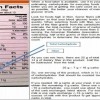 “Carb” counting is a way to plan meals to help you maintain target blood glucose levels. Certain foods contain carbohydrate, and these are the foods that most influence your blood glucose. Your body needs carbohydrate in just the right amount. Not enough carbohydrate can lead to low blood glucose (hypoglycemia). Too much carbohydrate can lead to high blood glucose (hyperglycemia). This is why carb counting is a great tool to understand and practice because it can help you control your blood glucose and still give you the freedom to make varied food choices. This 4-page fact sheet was written by Cassie Rowe, Jamila R. Lepore, and Wendy J. Dahl, and published by the UF Department of Food Science and Human Nutrition, March 2013.
“Carb” counting is a way to plan meals to help you maintain target blood glucose levels. Certain foods contain carbohydrate, and these are the foods that most influence your blood glucose. Your body needs carbohydrate in just the right amount. Not enough carbohydrate can lead to low blood glucose (hypoglycemia). Too much carbohydrate can lead to high blood glucose (hyperglycemia). This is why carb counting is a great tool to understand and practice because it can help you control your blood glucose and still give you the freedom to make varied food choices. This 4-page fact sheet was written by Cassie Rowe, Jamila R. Lepore, and Wendy J. Dahl, and published by the UF Department of Food Science and Human Nutrition, March 2013.
http://edis.ifas.ufl.edu/fs212
Pureed Foods: High Protein (FSHN1215/FS208)
 Protein is an important nutrient. Many older adults do not consume enough of this vital nutrient, crucial to overall health and well-being. For those with dysphagia and on a puréed diet, consuming sufficient protein is even more difficult. While a texture-modified diet may not be the diet of choice, the goal is to make it as appealing as possible so that the person consuming the purées can experience a better quality of life. This 4-page fact sheet was written by Jamila R. Lepore and Wendy J. Dahl, and published by the UF Department of Food Science and Human Nutrition, March 2013.
Protein is an important nutrient. Many older adults do not consume enough of this vital nutrient, crucial to overall health and well-being. For those with dysphagia and on a puréed diet, consuming sufficient protein is even more difficult. While a texture-modified diet may not be the diet of choice, the goal is to make it as appealing as possible so that the person consuming the purées can experience a better quality of life. This 4-page fact sheet was written by Jamila R. Lepore and Wendy J. Dahl, and published by the UF Department of Food Science and Human Nutrition, March 2013.
http://edis.ifas.ufl.edu/fs208
Promoting Healthy Relationship Development in Teens, Part I: How Dating Smart in Youth Can Foster Better Relationships in Adulthood (FCS2325/FY1363)
 Cultivating healthy dating relationships that can lead to healthy adult romantic and marriage relationships is a science that reflects a complicated calculus of the premarital influences that may shape future relationship stability, quality, and satisfaction. This 4-page fact sheet was written by Victor W. Harris, Gilon Marts, and Martie Gillen, and published by the UF Department of Family Youth and Community Sciences, March 2013.
Cultivating healthy dating relationships that can lead to healthy adult romantic and marriage relationships is a science that reflects a complicated calculus of the premarital influences that may shape future relationship stability, quality, and satisfaction. This 4-page fact sheet was written by Victor W. Harris, Gilon Marts, and Martie Gillen, and published by the UF Department of Family Youth and Community Sciences, March 2013.
http://edis.ifas.ufl.edu/fy1363
What Is a Healthy Dating or Marriage Relationship? (FCS2323/FY1361)
 Defining what a healthy romantic relationship is can be challenging. Thankfully, modern research has given us a good idea of what healthy dating and marriage relationships look like. Use this fact sheet to determine what a healthy relationship looks like to you. Then take the survey to get an idea of the strengths already present in your relationship and those things you may want to work on. This 3-page fact sheet was written by Victor W. Harris, and published by the UF Department of Family Youth and Community Sciences, March 2013.
Defining what a healthy romantic relationship is can be challenging. Thankfully, modern research has given us a good idea of what healthy dating and marriage relationships look like. Use this fact sheet to determine what a healthy relationship looks like to you. Then take the survey to get an idea of the strengths already present in your relationship and those things you may want to work on. This 3-page fact sheet was written by Victor W. Harris, and published by the UF Department of Family Youth and Community Sciences, March 2013.
http://edis.ifas.ufl.edu/fy1361
De compras para la salud: Sodio (FSHN1006S/FS211)
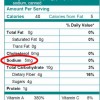 El sodio es un mineral que se encuentra en la sal de mesa. Es necesario para mantener un balance de fluidos y el volumen de sangre. El consumo excesivo de sodio puede causar presión alta en la sangre e incrementar el riesgo de enfermedades del corazón y derrames cerebrales. This 4-page fact sheet was written by Wendy J. Dahl y Lauren Foster, and published by the UF Department of Food Science and Human Nutrition, March 2013.
El sodio es un mineral que se encuentra en la sal de mesa. Es necesario para mantener un balance de fluidos y el volumen de sangre. El consumo excesivo de sodio puede causar presión alta en la sangre e incrementar el riesgo de enfermedades del corazón y derrames cerebrales. This 4-page fact sheet was written by Wendy J. Dahl y Lauren Foster, and published by the UF Department of Food Science and Human Nutrition, March 2013.
http://edis.ifas.ufl.edu/fs211
Preparation of Pureed Foods (FSHN1212/FS205)
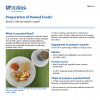 A puréed food is a food item that has been blended, mixed, or processed into a smooth and uniform texture. Examples of foods with a purée consistency include applesauce, pumpkin pie filling, and hummus. Puréed foods may be necessary for people with chewing and/or swallowing problems. For those requiring a puréed diet, it is important to provide a variety of foods. Almost any food can be puréed. However, some puréed foods may be much more acceptable than others. This 4-page fact sheet was written by Wendy J. Dahl and Jamila R. Lepore, and published by the UF Department of Food Science and Human Nutrition, March 2013.
A puréed food is a food item that has been blended, mixed, or processed into a smooth and uniform texture. Examples of foods with a purée consistency include applesauce, pumpkin pie filling, and hummus. Puréed foods may be necessary for people with chewing and/or swallowing problems. For those requiring a puréed diet, it is important to provide a variety of foods. Almost any food can be puréed. However, some puréed foods may be much more acceptable than others. This 4-page fact sheet was written by Wendy J. Dahl and Jamila R. Lepore, and published by the UF Department of Food Science and Human Nutrition, March 2013.
http://edis.ifas.ufl.edu/fs205